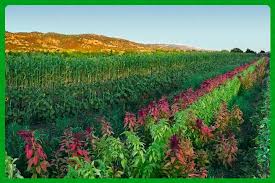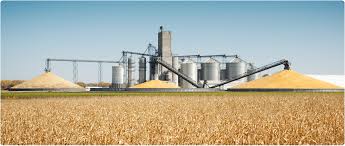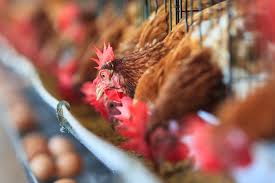Risk is an important aspect of the farming business. The uncertainties of weather, yields, prices, government policies, global markets, and other factors can cause wide swings in farm income.
Risk management involves choosing among alternatives that reduce the financial effects of such uncertainties. Farmers have many options for managing the risks they face, and most producers use a combination of strategies and tools.
Some strategies deal with only one kind of risk, while others address multiple risks.
Risk management in agriculture is now an essential tool for farmers to anticipate, avoid, and react to shocks. An efficient risk management system for agriculture will preserve the standard of living of those who depend on farming, strengthen the viability of farm businesses, and provide an environment that supports investment in the farming sector.
There are three recognized management strategies for responding to risks. These can be described as:
- Risk mitigation.
- Risk coping.
- Risk transfer/risk sharing.
A fourth approach is that of risk avoidance or risk prevention. However, this is rarely possible in agricultural production, especially in developing countries where there are very few alternative sources of non-farm employment.
Risk mitigation is a strategy adopted before the occurrence of risk on the farm. Risk mitigation includes all methods used to decrease the adverse effects of a particular risk. Mitigation methods are referred to as ex-ante strategies.
Mitigation methods include reducing the risk itself, reducing exposure to the risk, and introducing practices that allow adaptation to the risk. Enterprise diversification and vertical integration are farm practices that can be used as risk mitigation methods.
Read Also: Astilbe Flowers – All you need to know
Enterprise Diversification

Diversification is a frequently used ex-ante risk management strategy that involves participating in more than one activity. Diversification is an effective way of reducing income variability. It is the combining of different production processes.
Effective diversification occurs when low income from one enterprise is offset by satisfactory or high incomes from other enterprises. It typically reduces large year-to-year variations in income and may ensure adequate cash flow for meeting production costs, debt obligations, and family living needs.
However, acquiring new overall knowledge about an alternative business, new crop production expertise, and new equipment for a new crop may be costly.
Expanding into new areas or experimenting with new crops will increase capital investment requirements. For instance, diversification can include different crops, combinations of crops and livestock, different endpoints in the same production process (such as different selling weights), or different types of the same crop.
The motivation for diversifying is based on the idea that returns from various enterprises do not move up and down in lockstep, so that when one activity has low returns, other activities likely would have higher returns.
A crop farm, for example, may have several productive enterprises (several different crops or both crops and livestock) or may operate disjointed parcels so that localized weather disasters are less likely to reduce yields for all crops simultaneously.
Many crop farms in less developed countries engage in mixed cropping. For example, they produce maize and melon, maize and cassava, or maize, cassava, yam, and vegetables.
By producing two or more crops instead of only one, the farm is less at risk of having low revenues because revenues from the two crops are not perfectly positively correlated. In some years, low maize revenues may be counterbalanced by relatively high melon revenues.
Planting maize and melon or cowpea, for instance, will not only reduce variability in income but may also reduce the fertilizer requirement of the soil because of the nitrogen-fixing properties of bacteria that reside in the root nodules of cowpea plants.
It may spread out labor and machine use over critical times in the planting and harvesting seasons. In situations where livestock is part of the enterprise mix, the operator may be kept busy throughout the year, and crop and animal by-products may be used more fully.
Through crop diversification, as a production risk management tool, farmers and ranchers may acquire another marketing tool, providing another way to enhance profitability. Direct marketing of the diversified crop to consumers is becoming much more common, including farmers’ markets, roadside stands, and community-supported agriculture arrangements.
The benefits of diversifying income sources depend on the variability of returns faced by a producer. Diversification can also be achieved by having several income sources, such as on-farm businesses and off-farm income (employment, investments, or savings), to help counter negative fluctuations in farm income.
Many factors may contribute to a farmer’s decision to diversify. The underlying theory suggests that farmers are more likely to diversify if they confront greater risks in farming, are relatively risk-averse, and face small reductions in expected returns in response to diversification.
Some factors can work against diversification in crops. For example, corn and soybeans use similar machinery and equipment, but many specialty crops that can be grown may require special equipment. Thus, the benefits of diversification may be offset by increased costs.
Other crop enterprises may provide very low returns to capital, labor, and management. Although variability could be reduced by including these enterprises in the farm business, most farmers are unwilling to accept the reduced income that also results.
Read Also: 15 Medicinal Health Benefits Of Comfrey (Symphytum officinale)
Vertical Integration

Vertical integration is a type of management control. It is a mitigation method of risk management that is used to reduce the effect of production risk in agriculture. It is similar to enterprise diversification but differs to a very large extent.
While enterprise diversification can involve a combination of related and unrelated enterprises, vertical integration involves the combination of two or more related enterprises. It is one of the alternative methods of coordinating management and control of farm production from farm supplier to ultimate consumer.
Vertical integration can be defined as the combination of two or more stages of a production-marketing chain under single ownership. Vertical integration could be in two forms:
i. Backward Integration
This occurs when a firm decides to make rather than buy an input from an independent supplier. In other words, a firm is said to be backward integrated when it has control over the supply of its inputs.
ii. Forward Integration
This occurs when a firm decides to use rather than sell one of its products to independent customers. Conversely, vertical disintegration involves a decision to buy rather than make an input or to sell rather than use an input.
Backward integration could be a case whereby a poultry farm produces its feed by acquiring a feed mill, and forward integration signifies a poultry farm that acquires its inputs from the upstream but combines distribution with production.
Vertical integration generally decreases risk associated with the quantity and quality of inputs or outputs because the vertically integrated firm retains ownership or control of a commodity across two or more phases of production and/or marketing.
There are many examples of vertical integration in farming. Farmers who raise corn and hay as feed for their dairy operations are vertically integrated across both crop and livestock production.
Similarly, cattle producers who combine raising a cow-calf herd, backgrounding the animals to medium weights, and feeding cattle to slaughter weights are vertically integrated.
Poultry farmers with large operations may own their own feed mill, hatchery, laying operation, and freezing/drying plant for the processing of egg products and chicken.
The decision to integrate vertically depends on many complex factors, including the change in profits associated with vertical integration, the risks associated with the quantity and quality of the supply of inputs (or outputs) before and after integration, and other factors.
In particular, the relationship between vertical integration and risk involves an evaluation of the expected returns and the variance and covariance of the farmer’s return on investment for the current activity and the integration alternative.
If the correlation is positive and large across activities, the gains in risk efficiency from vertical integration may be relatively low. In contrast, a negative correlation across activities implies that integrating vertically may well reduce risk for the farmer by internalizing processes within the operation.
1. Benefits of Vertical Integration
Vertical integration, as a risk mitigation method, potentially offers the following advantages:
i. Reduces transportation costs and risks associated with transporting inputs and outputs if common ownership results in closer geographic proximity.
ii. Improves supply chain coordination.
iii. Firms may integrate as a risk reduction strategy.
iv. Minimizes losses and costs, thereby increasing the profitability of business enterprises.
v. Provides more opportunities to differentiate by means of increased control over inputs.
vi. Ensures the quality of inputs.
vii. Guarantees adequate and timely supply of inputs.
2. Drawbacks of Vertical Integration
While some of the benefits of vertical integration can be quite attractive to the firm, the drawbacks may negate any potential gains. Vertical integration potentially has the following disadvantages:
i. Requires a high level of capital investment. For instance, a poultry farm that integrates backward is expected to acquire a feed mill and produce the maize to feed the mill.
ii. The profitability advantage of vertical integration is often limited by scale and scope incompatibility and underutilization of machinery.
This problem will occur, for instance, in a vertically integrated poultry farm if the capacity of the feed mill is greater than the feed requirements of the poultry farm. This is a capacity balancing issue and is also known as unbalanced throughput.
iii. Potentially higher costs due to low efficiencies resulting from a lack of supplier competition.
iv. Reduces flexibility due to previous upstream or downstream investments.
v. Decreases the ability to increase product variety if significant in-house development is required.
vi. Increases bureaucracy and its attendant costs.
vii. May lead to a loss of specialization.
In this article, it has been established that diversification and vertical integration are ex-ante risk management techniques. Diversification is an effective way of reducing income variability, while vertical integration generally decreases risk associated with the quantity and quality of inputs or outputs.
Do you have any questions, suggestions, or contributions? If so, please feel free to use the comment box below to share your thoughts. We also encourage you to kindly share this information with others who might benefit from it. Since we can’t reach everyone at once, we truly appreciate your help in spreading the word. Thank you so much for your support and for sharing!
Read Also: How to Build a Raised Bed Garden
Frequently Asked Questions
We will update this section soon.

